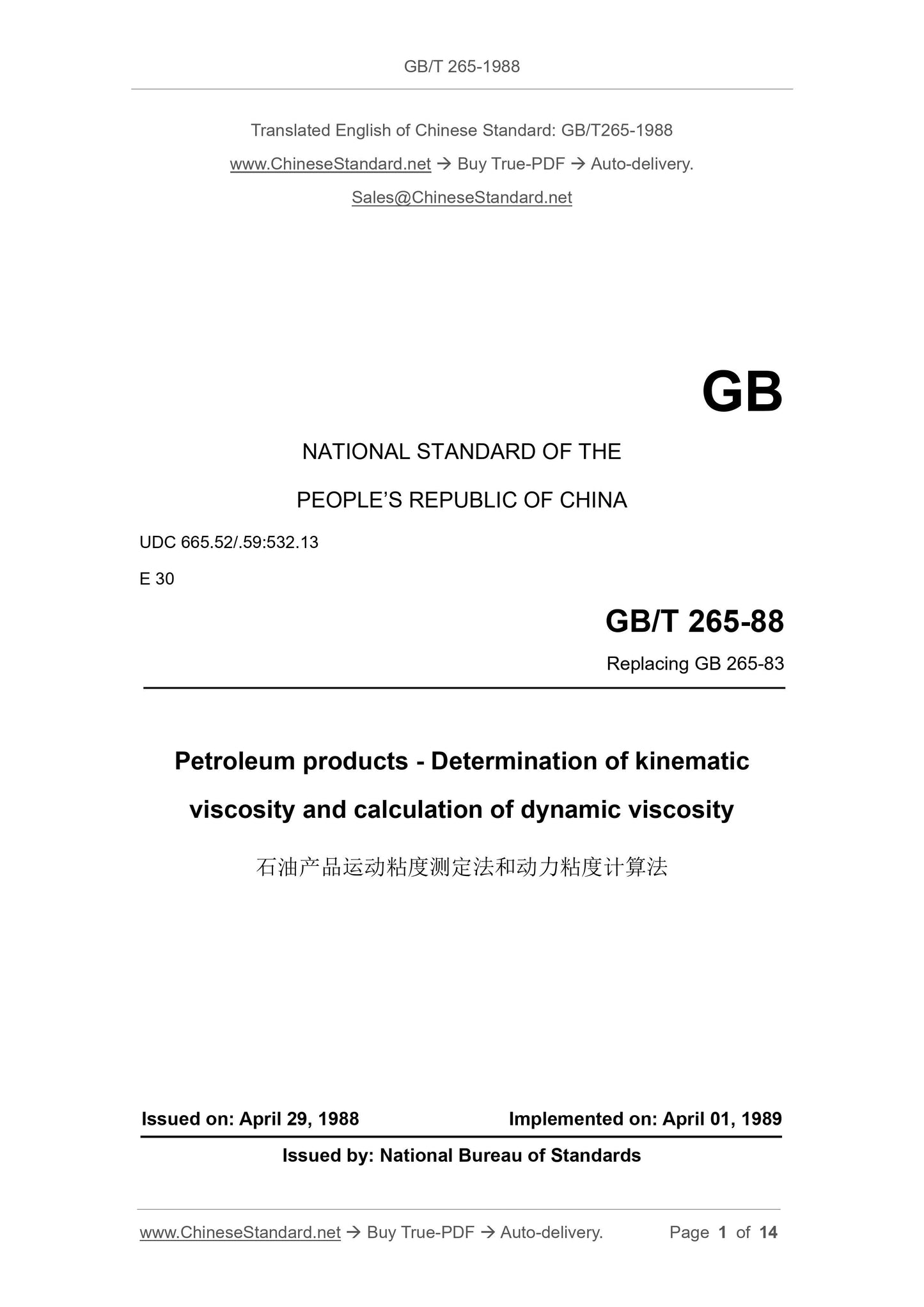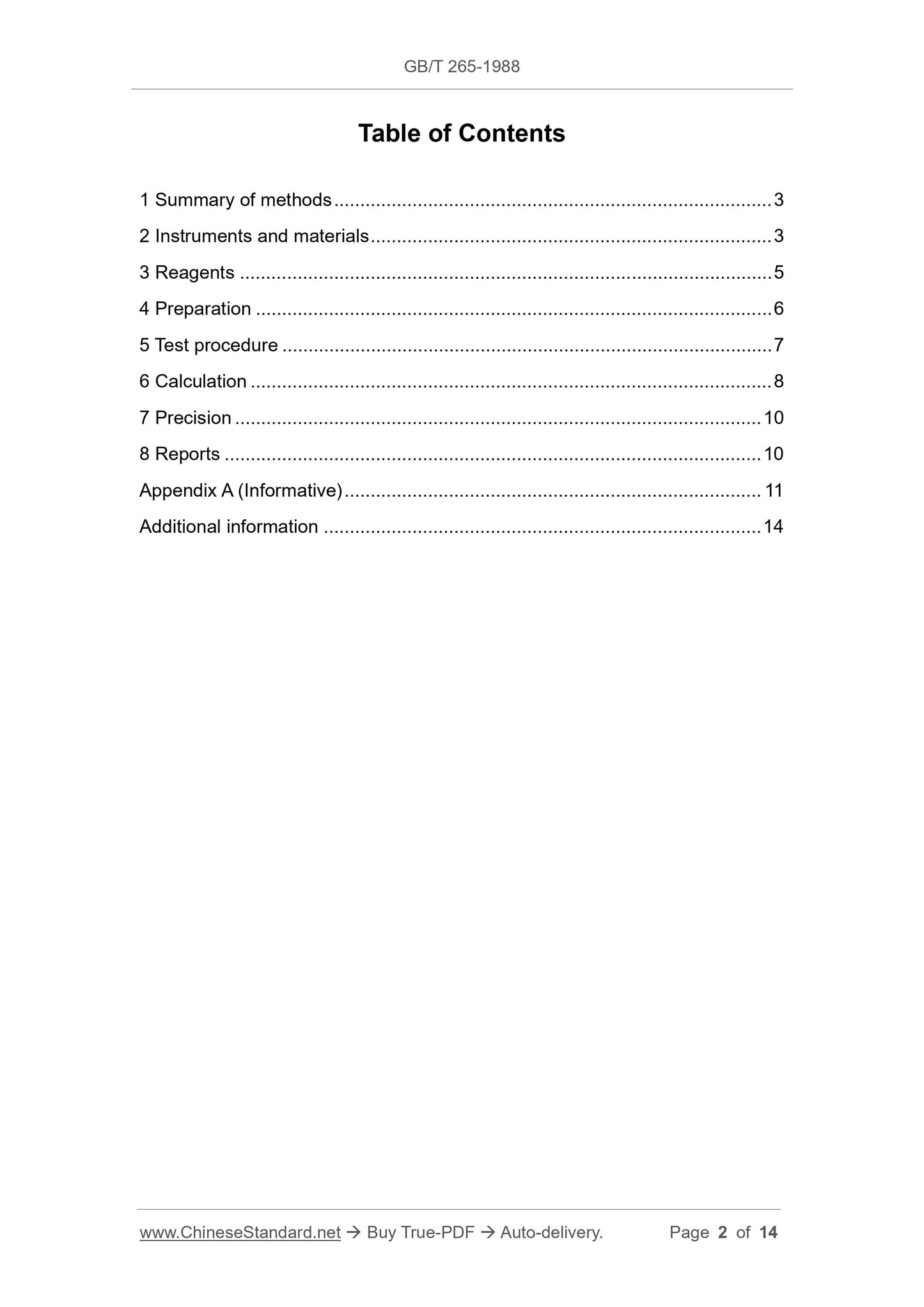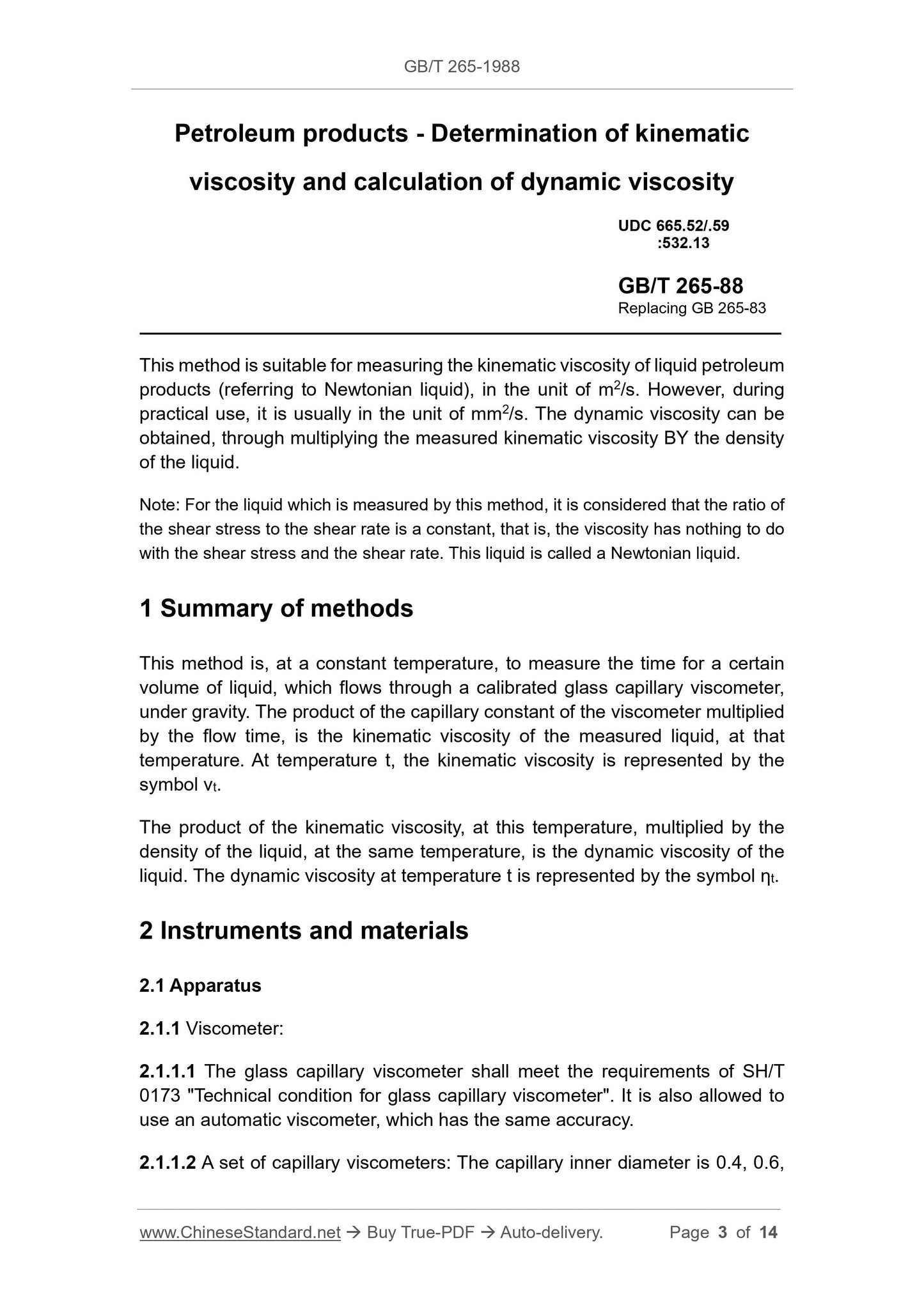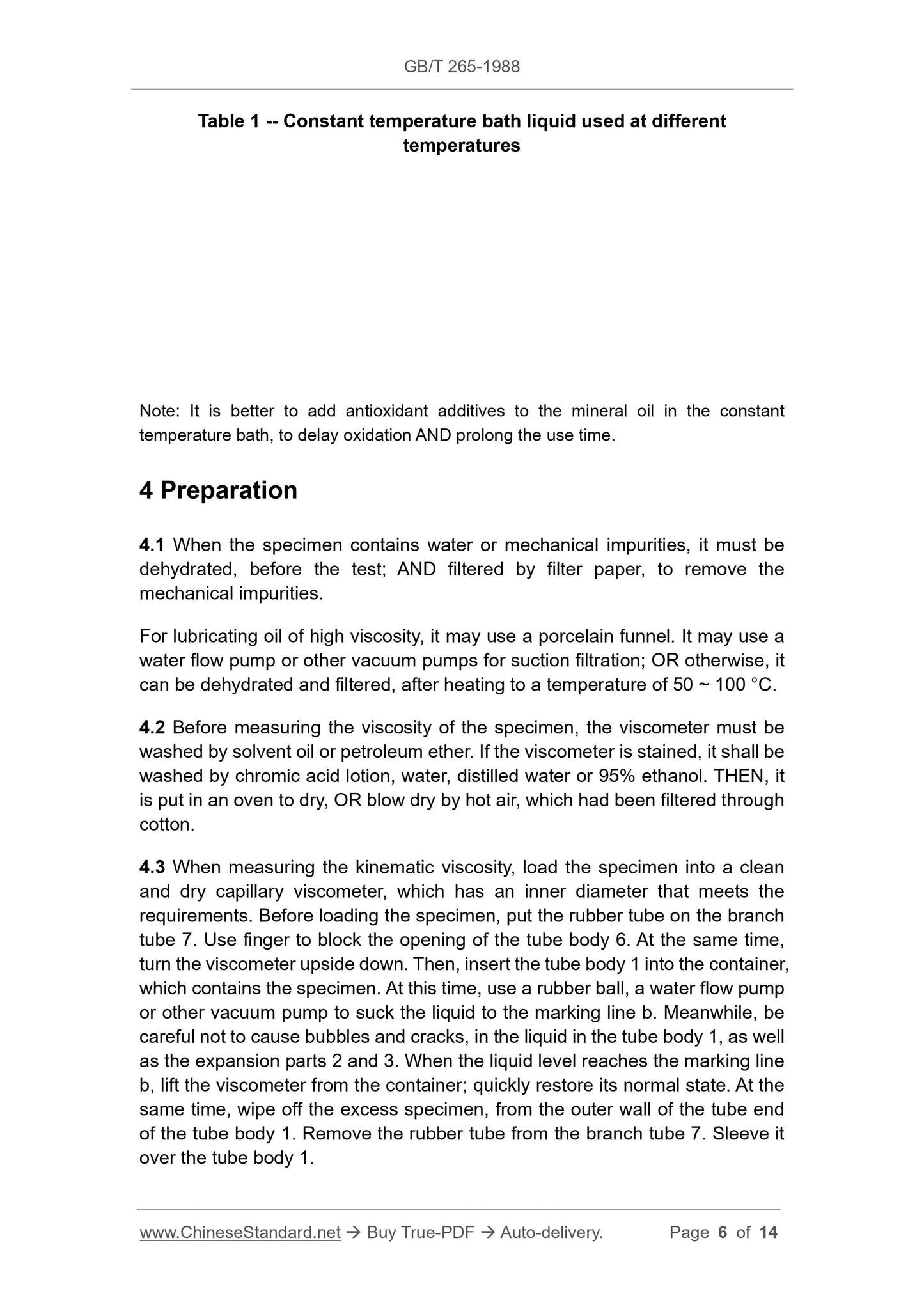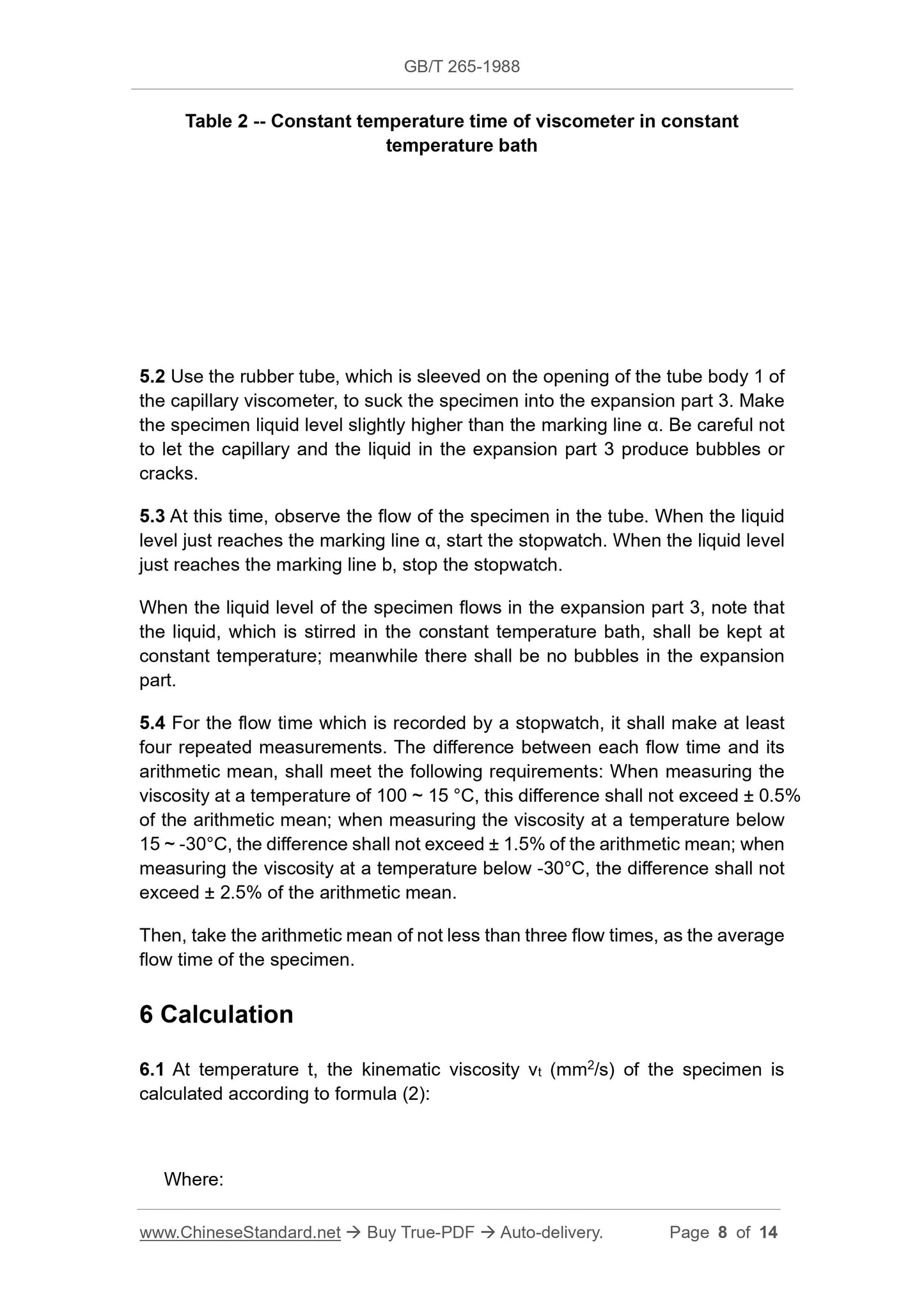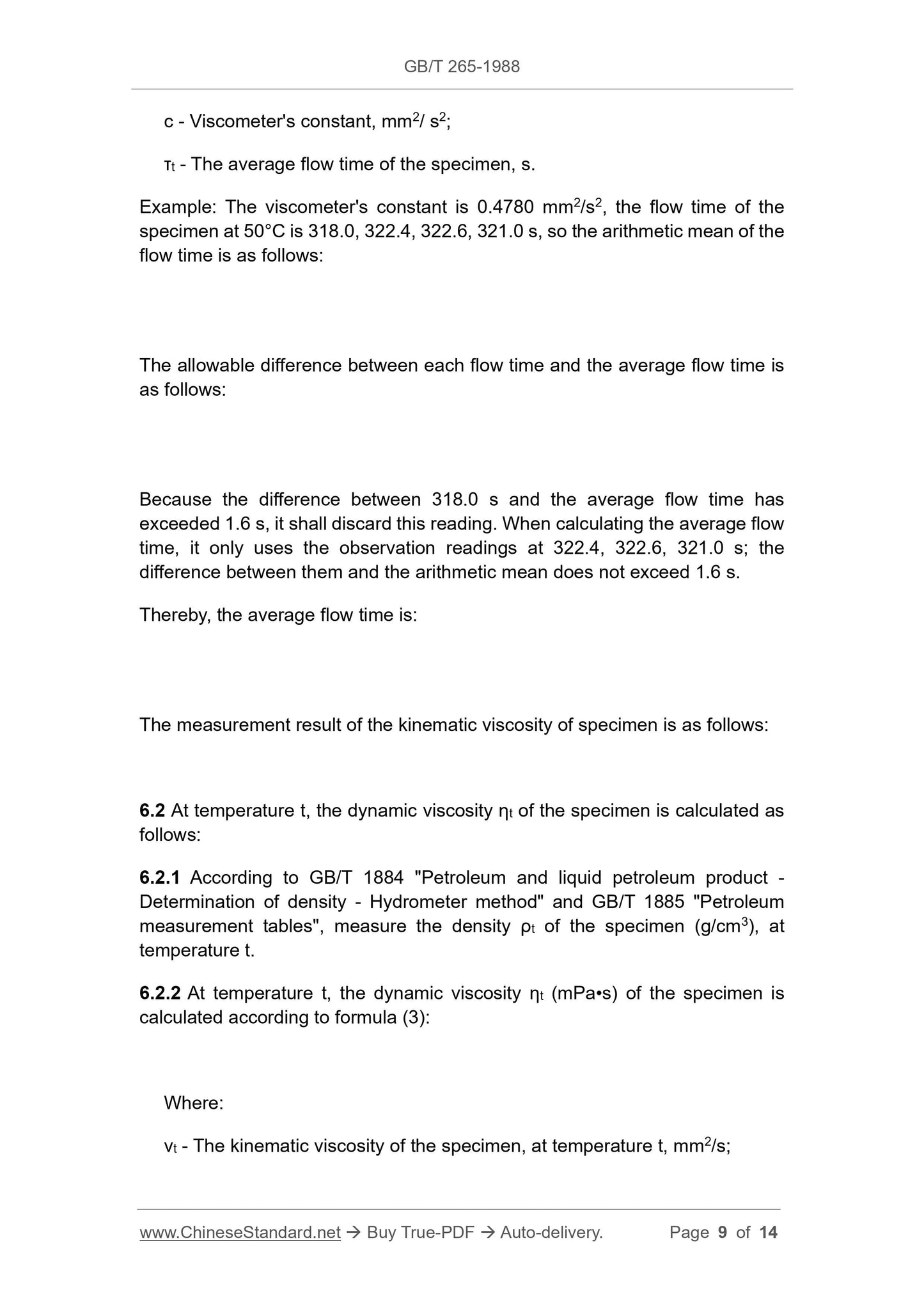1
/
of
6
www.ChineseStandard.us -- Field Test Asia Pte. Ltd.
GB/T 265-1988 English PDF (GB/T265-1988)
GB/T 265-1988 English PDF (GB/T265-1988)
Regular price
$95.00
Regular price
Sale price
$95.00
Unit price
/
per
Shipping calculated at checkout.
Couldn't load pickup availability
GB/T 265-1988: Petroleum products. Determination of kinematic viscosity and calculation of dynamic viscosity
Delivery: 9 seconds. Download (and Email) true-PDF + Invoice.Get Quotation: Click GB/T 265-1988 (Self-service in 1-minute)
Newer / historical versions: GB/T 265-1988
Preview True-PDF
Scope
This method is, at a constant temperature, to measure the time for a certainvolume of liquid, which flows through a calibrated glass capillary viscometer,
under gravity. The product of the capillary constant of the viscometer multiplied
by the flow time, is the kinematic viscosity of the measured liquid, at that
temperature. At temperature t, the kinematic viscosity is represented by the
symbol vt.
The product of the kinematic viscosity, at this temperature, multiplied by the
density of the liquid, at the same temperature, is the dynamic viscosity of the
liquid. The dynamic viscosity at temperature t is represented by the symbol ηt.
Basic Data
| Standard ID | GB/T 265-1988 (GB/T265-1988) |
| Description (Translated English) | Petroleum products. Determination of kinematic viscosity and calculation of dynamic viscosity |
| Sector / Industry | National Standard (Recommended) |
| Classification of Chinese Standard | E30 |
| Classification of International Standard | 75.08 |
| Word Count Estimation | 1,161 |
| Date of Issue | 4/29/1988 |
| Date of Implementation | 4/1/1989 |
| Older Standard (superseded by this standard) | GB 265-1983 |
| Issuing agency(ies) | National Bureau of Standards |
| Summary | This standard applies to the determination of liquid petroleum products (refer Newtonian liquid) kinematic viscosity, the unit m ^ 2/s, normally used for the mm ^ 2/s in practice. Dynamic viscosity as measured by a kinematic viscosity of the liquid is obtained by multiplying the density. |
Share
